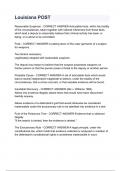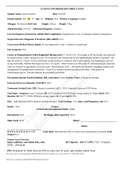Class notes
PSYCH 1XX3 Chapter 2: Evolution (Full Notes)
- Institution
- McMaster University (mcmasteru)
These psychology notes provide in-depth coverage of the module content and textbook material, offering detailed explanations with examples to enhance understanding. I guarantee that you won't need another resource to study if you get your hand on these considering all the time and effort I put in t...
[Show more]





